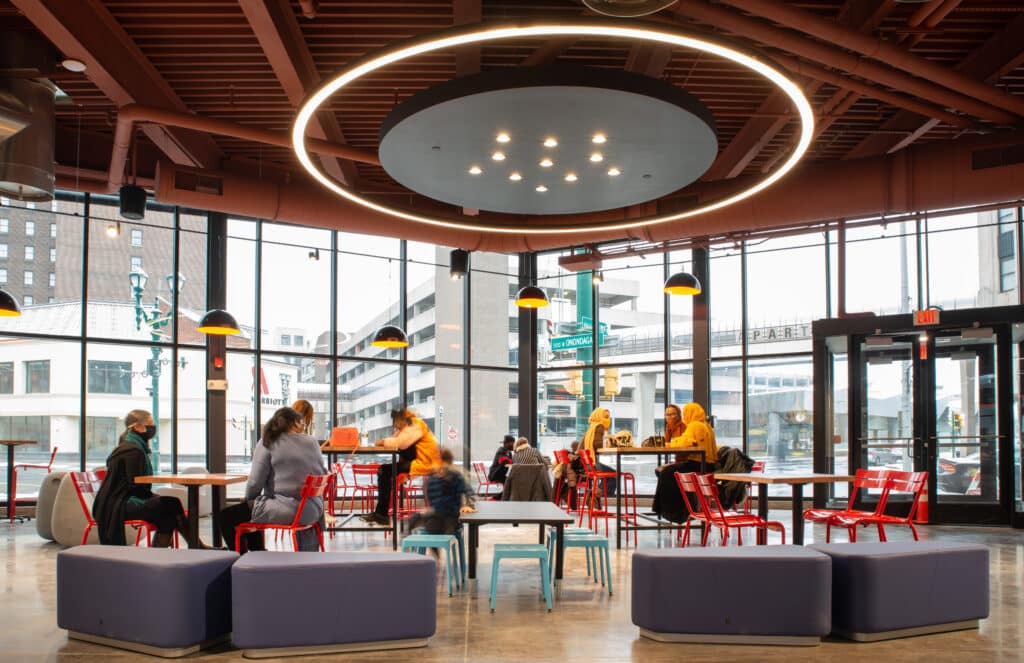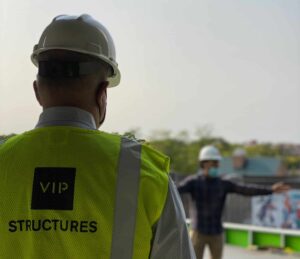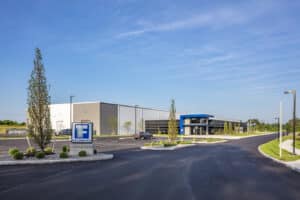In these days of cost containment and short timelines, there is increasing pressure on design and construction companies to deliver quality builds quickly. They must also take into account budgets and associated costs with a design-build project. An experimentation with various forms of project delivery methods has seen the design-build concept emerging as the leader in many ways, especially when it comes to efficiencies in both communication and cost. As we mentioned in a prior blog post explaining 4 reasons to use an integrated design-build firm, the iterative nature, risk minimization, owner’s perspective, and development perspective are all benefits of the process.

The more traditional design-bid-build model is one in which the owner needs to contract separately with a designer and contractor for any new project. The selected design or architectural firm is hired to deliver all of the appropriate design documents. It is then the responsibility of the owner to solicit bids from construction firms to complete the work. In this scenario, neither the designer nor the construction company bears any contractual obligation to each other and the owner shoulders all associated risks.
In the much more beneficial design-build concept, an owner will hire one firm, the design-build integrated firm, which performs the architectural, engineering, and construction components under one contract. Some unique integrated firms even offer development and management options after the building is complete. Based on the structure of the design-build company, portions of the job’s completion may be subcontracted out appropriately, however the company manages the process to completion. The design-build firm works in a highly collaborative architectural and construction team environment. They become a single point of contact for all stakeholders, transferring the risks from the owner.
Constructing the Costs of Design-Build
Unlike more traditional methods of estimating a construction project, the design-build approach means the project has one point of contact responsible for obtaining and communicating the costs to the owner. Most owners have budget constraints that influence their capital and financing so they rely heavily on accurate estimating and cost forecasts for every phase of the project. It falls on the design-build team to employ their extensive knowledge and understanding of all project-associated costs such as materials, equipment, and labor to provide a comprehensive cost view of the project at various phases during the design-build process.
The objective of the design-build cost estimate is to outline the associated costs and determine if they will be acceptable to the owner, which occurs early in the design phase. A design-build firm can provide an owner with a GMAX (Guaranteed Maximum Price) upon 50% design completion, unlike the more traditional methods where project cost is not realized until after the bidding phase. This critical step allows an owner to make important decisions early on in the design phase and is why design-build is so valuable to owners and developers.
8 Basic Costs of a Design-Build Project Estimate
- Quantity identification establishes quantities of various project materials that will be needed to complete the project.
- Project design costs include fees associated with architectural, mechanical engineering, CAD support, civil engineering, and other support.
- Labor hours are developed on a unit man-hour basis or a team analysis. Allowances need to be made for the varying production capability based on a project’s complexity.
- Labor rates are the cost per hour for the workers on the project. Estimates should include architectural, engineering and any specialized skill rates as well as overtime estimates.
- Subcontractor fees for electrical, plumbing, and other specialties will be incorporated based on the scope of the project. A subcontractor quote will also include material, labor, equipment, and indirect costs.
- Material prices tend to fluctuate so projections must be made based on the anticipation of price variations and timing. Some variables include material availability, delivery physical requirements, manufacturer peak or slack time, order size, etc. This is another reason pre-engineered buildings are growing in popularity.
- Equipment costs are dependent upon project conditions to determine the type, size, and capacity of necessary equipment to be used on the project. Costs will differ if the equipment is rented or owned by the contractor.
- Indirect costs include materials, labor, and equipment that are necessary to complete the project but that are not necessarily part of the actual building costs. These can include permits, legal fees, staffing, temporary heating and cooling, small tools, consumables, etc.
Design-build Outperforms in Terms of Cost Savings
The design-build integrated method of construction is attractive for many reasons (i.e. effective communication, scheduling, and flexibility), but perhaps most importantly it places a cap on costs. Those organizations with strict budget parameters are flocking to the design-build method because of the clear efforts to keep costs in check and the communication of those efforts with all the members of the project team. A single point of contact dramatically reduces the need for change orders, minimizing additional costs and schedule delays. From an exchange of information perspective, dealing with one firm always reduces time and complications compared to dealing with multiple contacts.
Due to its efficiencies, design-build not only reduces construction costs but opportunity costs as well. Smooth delivery and streamlined operations allow owners and developers to spend less time on a current build so they can invest more time into other aspects of their business, such as developing new projects. The expedited timelines of design-build often have positive impacts on manufacturing and production operations, creating more profitability for businesses sooner.
Contact Our Firm
Thank you for reading our post on the basic costs of design-build projects. For more information on VIP Structures, an integrated design-build firm in Upstate New York serving markets in Western New York, Watertown, Utica, and Syracuse, contact us below.



